How to take cuttings from plants: follow our expert advice
Discover how to take cuttings and get more plants for free. Here's everything you need to know for softwood, hardwood, and semi-ripe varieties
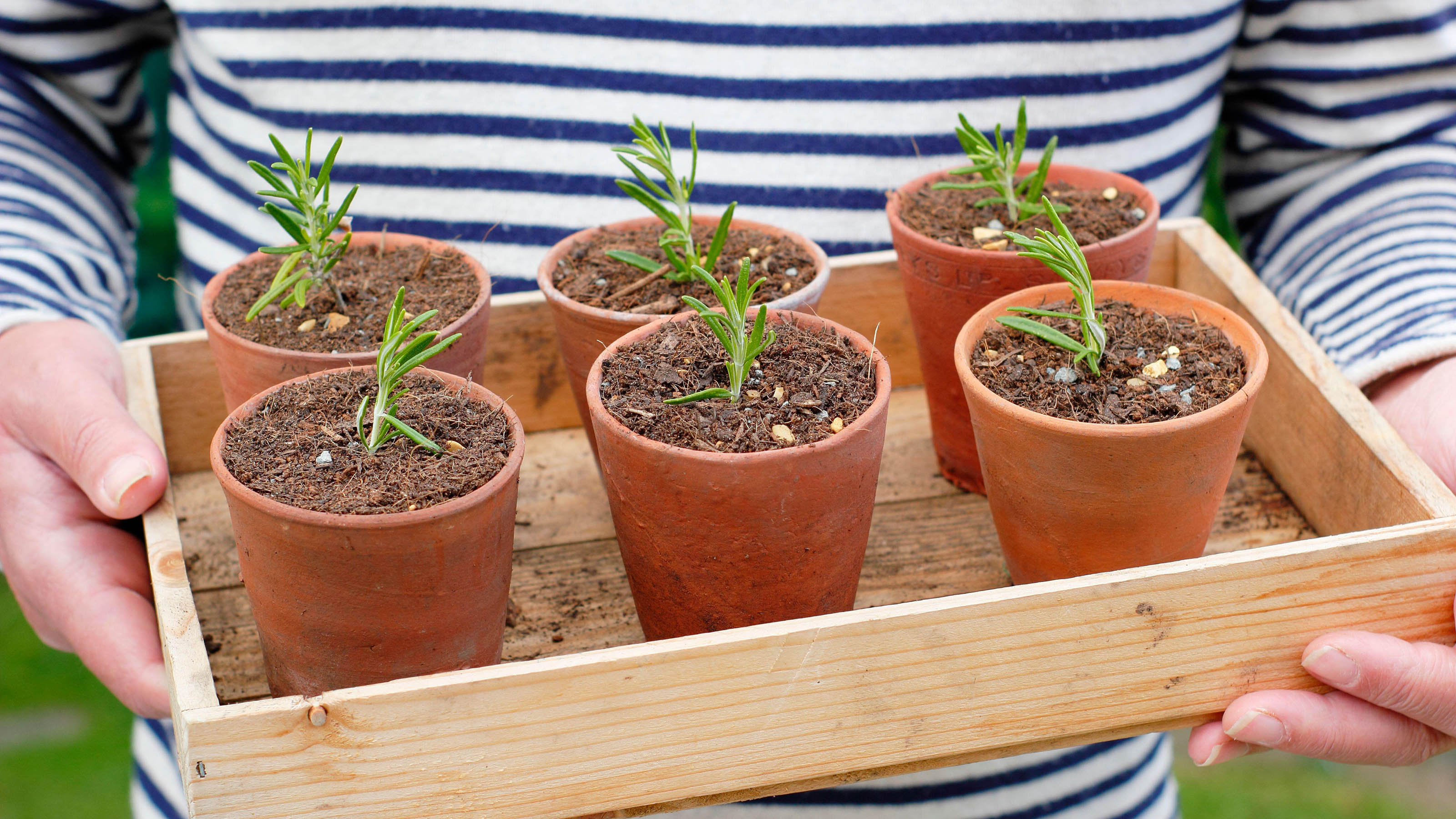

Follow our advice on how to take cuttings for an easy way to multiply your favorite plants. And, best of all, it's absolutely free to do. This means it will potentially save you a fortune – no more stocking up at pricey garden centers or nurseries each year.
By taking cuttings, you can turn almost any plant into three, four or more new ones to pep up your flowerbed ideas. As well as increasing your stock of plants, taking cuttings is a good insurance policy in case half-hardy perennials or tender shrubs don't survive a cold winter. They also make good budget-friendly gifts.
You can learn how to take cuttings from plants pretty much any time of year. Cuttings taken in late June to early August are known as softwood cuttings and usually have the highest success rate. Later in the summer, though, semi-ripe cuttings can be taken. Late autumn and winter is the time for hardwood cuttings. We explain how to do all of these, plus provide lots of extra tips on how to take cuttings from plants, below.
How to take cuttings from plants: softwood, semi-ripe, and hardwood varieties
How to take softwood cuttings
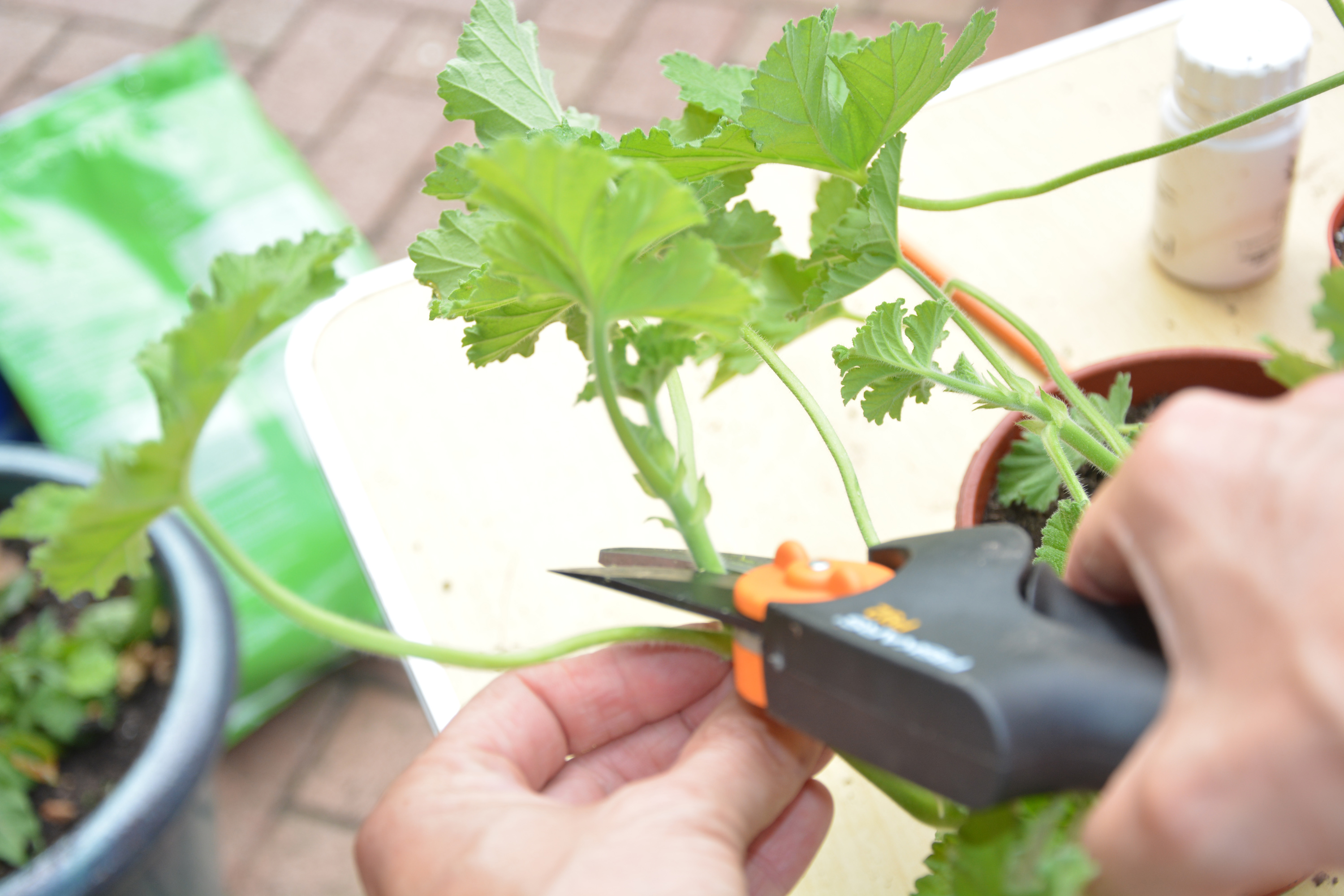
Softwood cuttings can be taken from pelargoniums as well as many other plants
Softwood cuttings can be used to propagate both hardy and tender perennials, as well as deciduous shrubs, climbers and some trees. They are taken in early to mid-summer.
- Choose only healthy, pest-free shoots with no flowers or buds.
- Using sharp, clean secateurs (our buying guide to the best secateurs has plenty of great picks if you need an update), snip off the top 5–10 centimeters from the soft new growth on the parent plant. Do this just below a single leaf joint or pair of leaves (this is where there is a concentration of hormones, which will stimulate root production).
- Gently pull off and discard the bottom few leaves.
- If you're taking lots of cuttings, put them in a glass of water as you take each one – this will prevent them from wilting until you're ready to pot them all up.
- It's a good idea to take several cuttings from each parent plant to increase your chance of success.
What time of day should you take softwood cuttings?
The best time of day to take softwood cuttings is first thing in the morning. This is when the parent plant will still be full of water (turgid), which makes it more likely for rooting to be successful.
How to pot up softwood cuttings
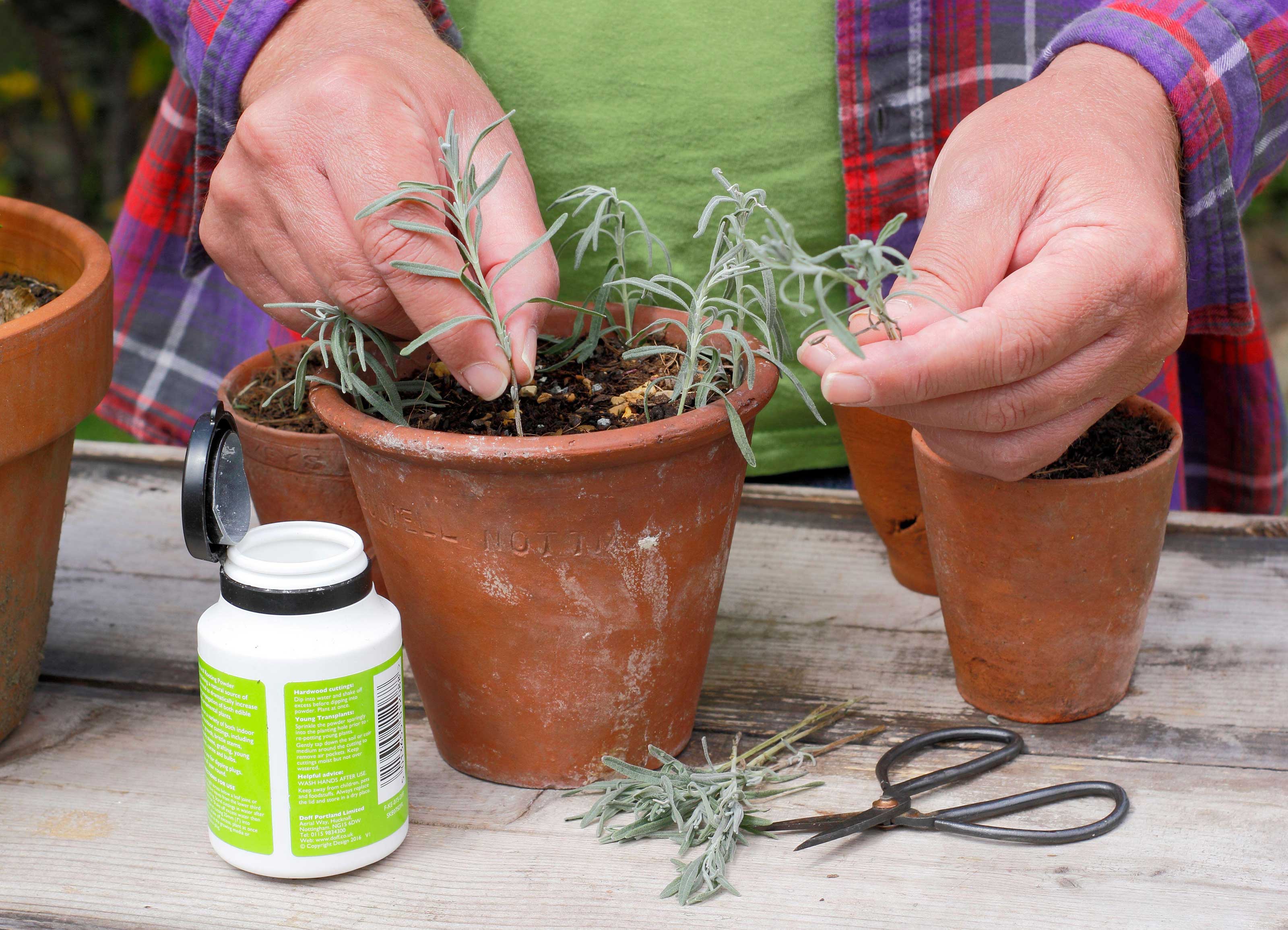
A little bit of hormone rooting powder can help cuttings to flourish
Taking cuttings is ideal if you're after cheap garden ideas. But, once you've learnt how to take cuttings from plants, you'll need to know what to do with them to ensure they grow successfully. Here's how to get them off to a good start:
- Fill small pots with moist but free-draining compost (a mix of 50% cuttings compost and 50% horticultural grit or perlite is ideal). Our guide on how to compost has lots of useful tips if you want to try making your own.
- Then, push several cuttings around the edge of each pot, keeping their remaining leaves clear of the surface.
- You should be able to fit three or four cuttings in a 10cm pot – be sure to position them so that their leaves don't touch.
- Water the cuttings well and allow excess water to drain away.
- Some people swear by first dipping the base of each cutting in hormone rooting powder (which you can buy in little pots from garden centers) to encourage root growth. But, for softwood cuttings it's not absolutely essential.
How do you encourage growth for softwood cuttings?
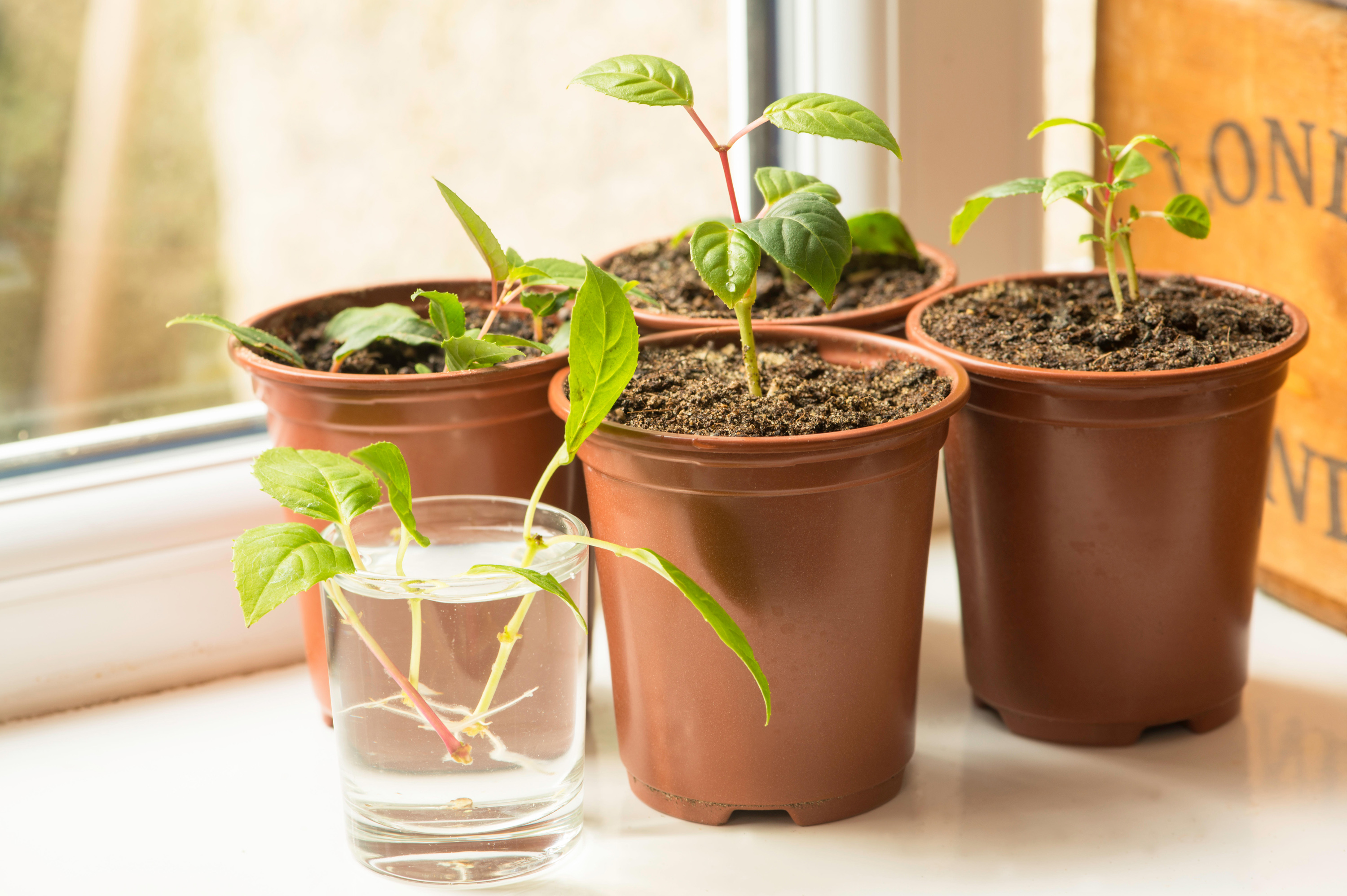
Fuchsia cuttings on a windowsill after being potted on
Once your cuttings are potted up, there's a few tips and tricks you can do to encourage healthy growth:
- Cover the pot with a clear plastic bag (a freezer bag works well, or use a sheet of clingfilm) and secure with an elastic band. Put the pot in a warm, light spot (a windowsill is ideal, but not in direct sunlight). You can also use your greenhouse ideas to store them.
- Briefly remove the plastic cover every day to shake out any condensation from it and check for signs of growth. Within a few weeks, roots should have formed – check for them beginning to grow out through the holes in the bottom of the pot, or by very gently pulling on the plants. If they resist, it means roots have started to form. At this point, move the cuttings into individual pots to grow on.
- Harden off the cuttings for about two weeks before putting them outside. To do this, stand them outdoors for an ever-increasing amount of time each day. Remove any dead, rotting, dying or diseased material at least weekly.
Which plants can you take softwood cuttings from?
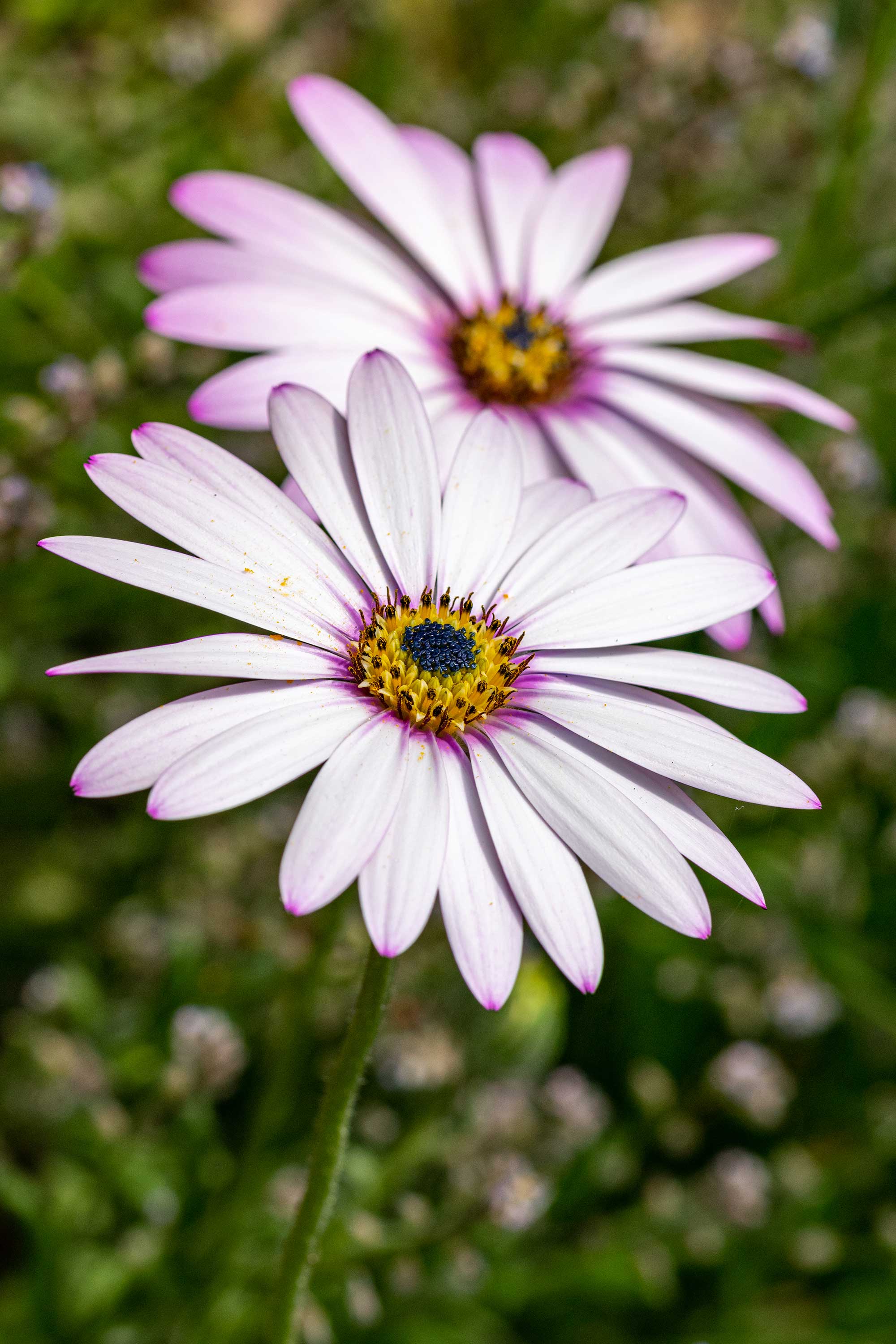
Osteospermum can be grown from cuttings
You can take softwood cuttings from all kinds of beautiful plants to make more. These include the likes of deciduous shrubs, such as buddleja, fuchsia, hydrangea, philadelphus and perovskia.
You can also take them from hardy and tender perennials such as salvia, osteospermum, penstemon, pelargonium and verbena – all wonderful choices for attracting pollinators to your plot.
If you need advice on growing these plants, our guides on how to grow fuchsias and how to grow hydrangeas have tons of tips.
How to take semi-ripe cuttings
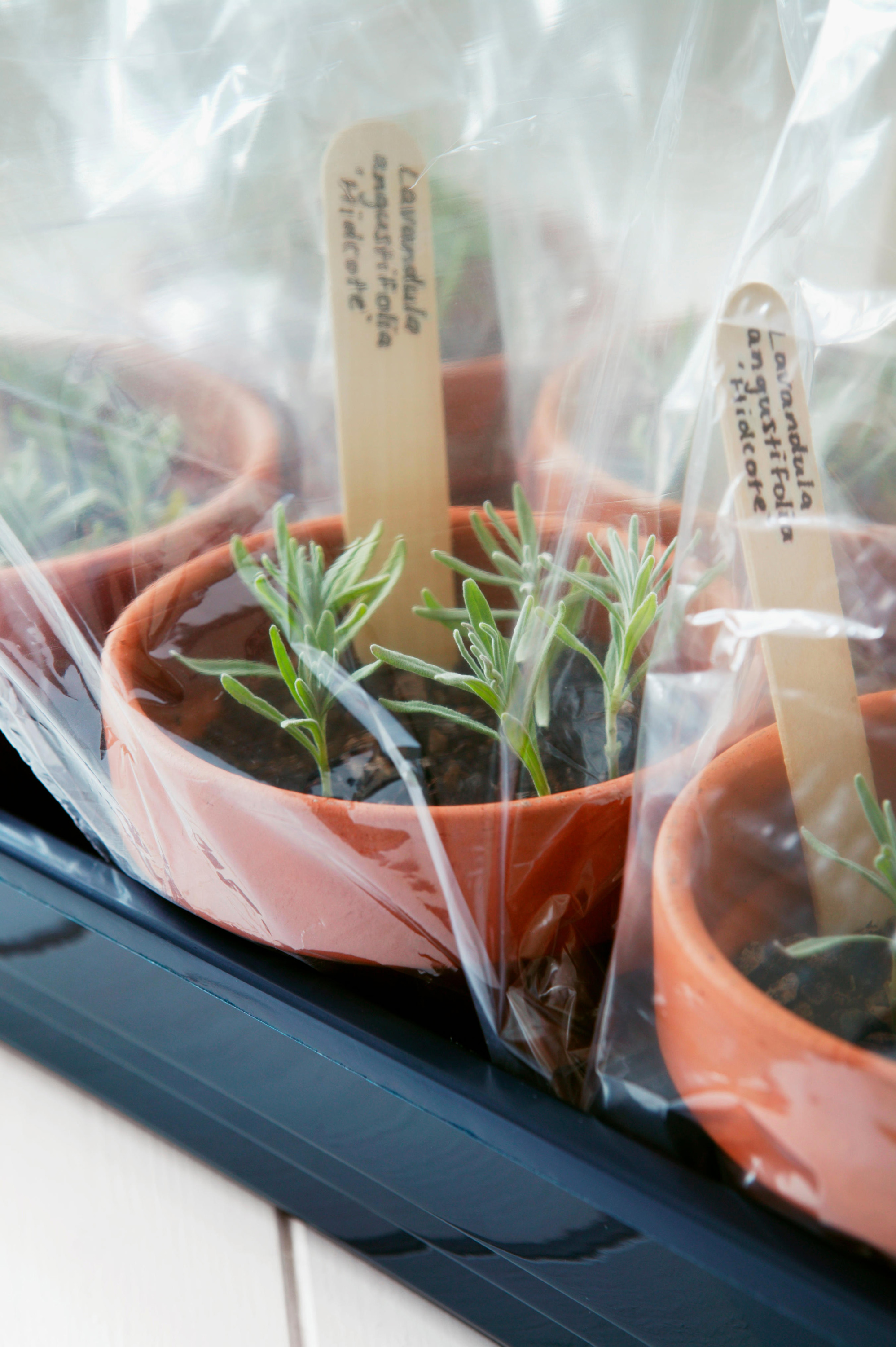
Here, pots of planted lavender semi-ripe cuttings have been covered with clear polythene bags to maintain humidity
September is a good time to take semi-ripe cuttings from a wide range of hardy climbers, herbs, ground-cover plants, shrubs and trees – especially evergreens.
The shoots you choose at this time of year will be slightly more mature than younger softwood cuttings. The base of the cutting will be hard, while the tip will still be soft and pliable. The process of taking and nurturing both kinds of cutting is basically the same, though.
- Avoid damaged, unhealthy, or over-vigorous shoots and choose ones with short internodes (gaps between the leaves).
- Cut just below a leaf node and aim for a cutting around 10–15cm long. Then pull away the lowest leaves and the soft tips, so you have about four leaves remaining.
- Dip the bottom of each cutting in hormone rooting powder, and tap gently to remove the excess.
- Insert into free-draining compost as for softwood cuttings and, if they're from large-leaved shrubs, cut the leaves in half to reduce water loss.
- Cover the pots with a clear plastic bag.
How do you encourage growth for semi-ripe cuttings?
Want to help your semi-ripe cuttings flourish? These tips will help:
- Although cuttings taken in summer seldom need extra heat, some of these later cuttings will root more quickly if they're placed in a special heated propagator.
- Hardy shrubs, though, can be pushed directly into the soil outdoors (dig in plenty of organic matter first). Or, try them in cold frames or a low tunnel made from polythene sheeting. They may not get a full set of roots until late spring the next year, however.
Which plants can you take semi-ripe cuttings from?
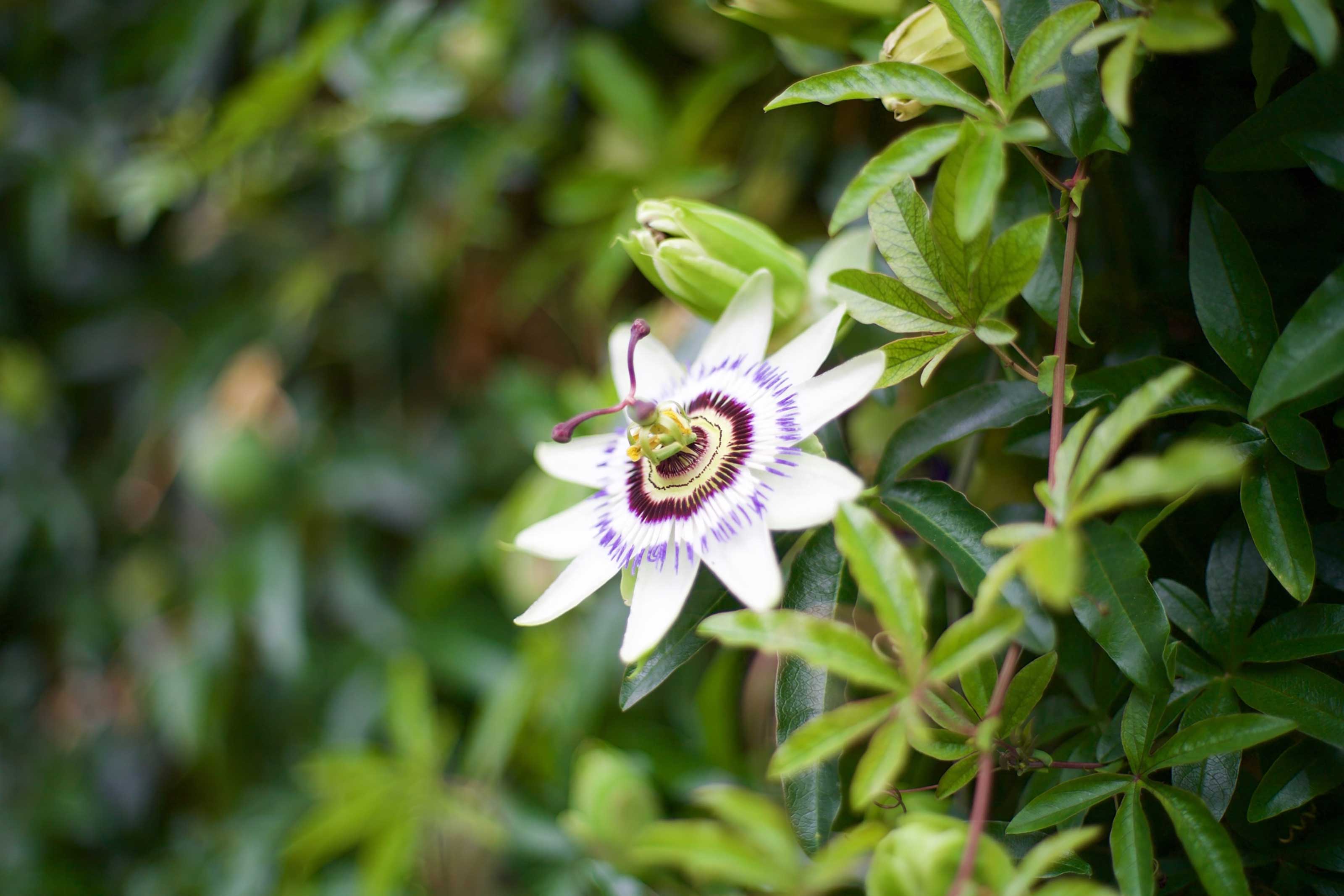
Passionflower is a lovely climber, and makes a good contender to try when learning how to take cuttings from plants
You can take semi-ripe cuttings from all sorts of plants. These include passionflower, solanum, trachelospermum and salvia, as well as evergreen shrubs such as camellia, ceanothus and hebe.
Try learning how to create a herb garden by taking semi-ripe cuttings from herbs like bay, lavender, sage and thyme. You can even take these kinds of cuttings from trees – try holly and many evergreen conifers.
What are semi-ripe 'heel' cuttings?
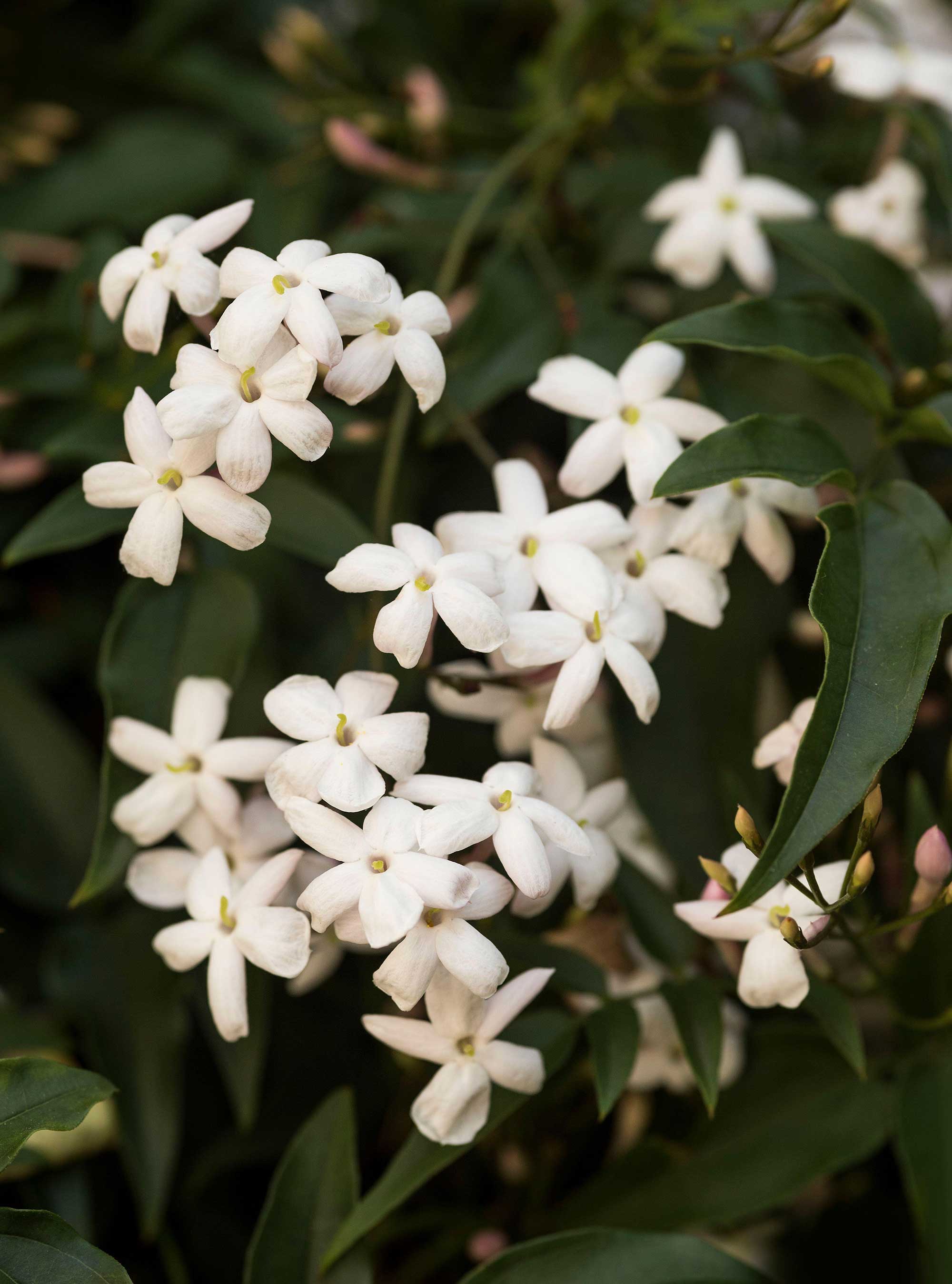
Sweetly-scented jasmine can be grown from semi-ripe 'heel' cuttings
It's also possible to take what’s known as semi-ripe 'heel' cuttings. To do this, you need to pull a piece of the plant's stem away, leaving a 'tail' of bark from the previous season's growth.
Ceanothus, berberis, sambucus, cotinus, and one of the best climbing plants – jasmine – are best propagated from heel cuttings in this way. Dip the heel in hormone rooting compound before proceeding as above.
How to take hardwood cuttings
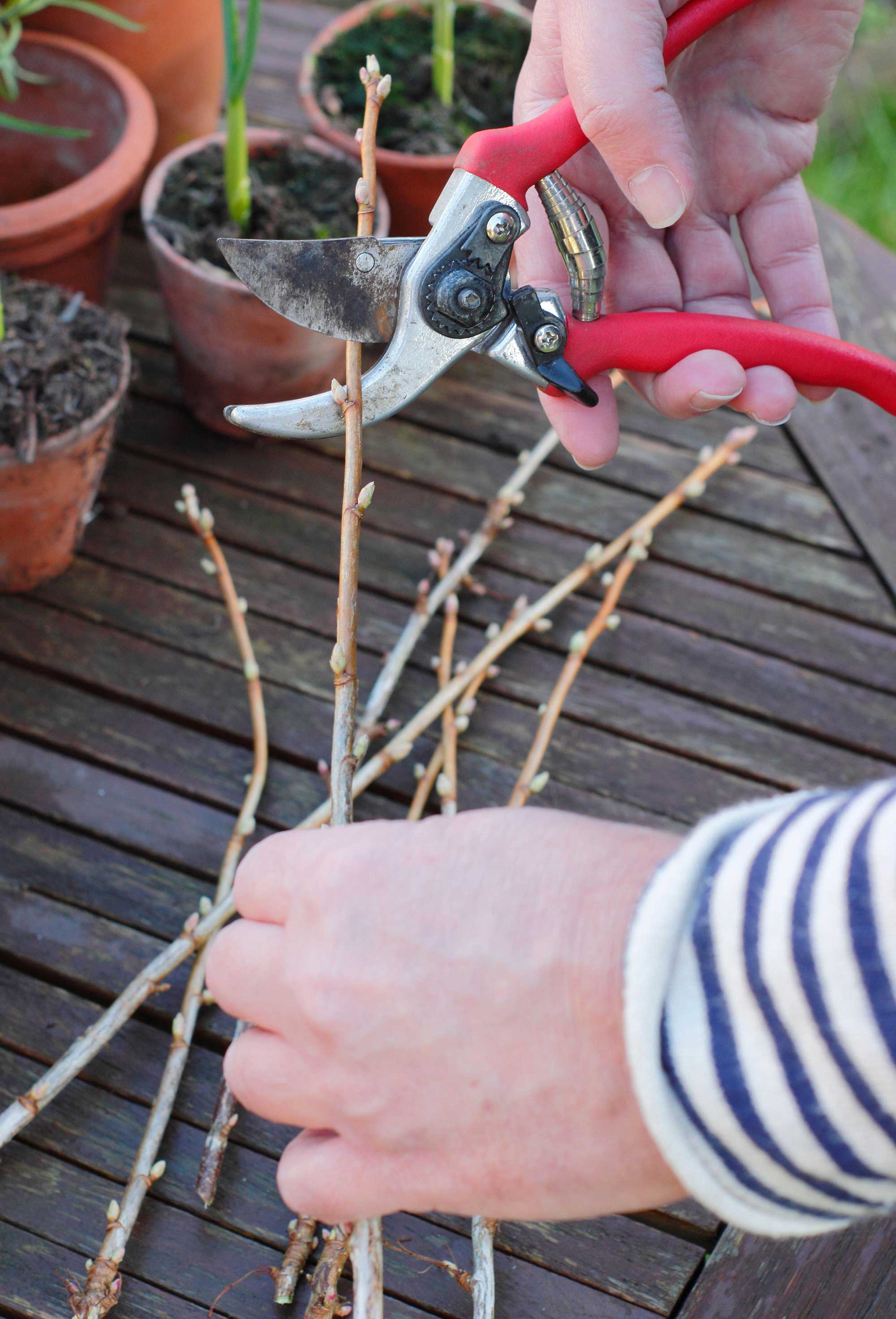
Blackcurrant cuttings can be taken to grow new plants
Softwood and semi-ripe cuttings need to be taken at a time when there are lots of other garden jobs needing attention. So, it's good to know that hardwood cuttings can still be taken later in the year, as the garden starts to wind down. These later cuttings are a good way of propagating deciduous climbers, trees and shrubs.
- Choose vigorous, healthy shoots that have grown in the current year and remove the soft tip growth from them.
- Cut the shoots into sections 15-30cm long, above a bud at the top. Use a sloping cut so that rainwater will run off it easily (and to help you remember which end is the top).
- Then, cut straight across at the base below a bud or pair of buds and dip the bottom cut end into hormone rooting powder.
When should you take hardwood cuttings?
Hardwood cuttings can be taken from mid-autumn until late winter – so are a great addition to your winter garden jobs.
They take longer to develop roots but it's a very reliable method. You can leave them outdoors and forget about them until the following year – the cut surface will develop a callus over the winter and roots develop from this in the spring.
How do you encourage growth for hardwood cuttings?
To encourage your hardwood cuttings to grow well, try this step-by-step advice:
- Fill a large pot with multi-purpose compost mixed with horticultural grit or perlite and water well, allowing excess water to drain away.
- Push the cuttings into the compost with two-thirds of each one below the surface. Allow 10–15cm (4–6in) between cuttings.
- Stand them in a sheltered spot outside and leave them until the following autumn, making sure the compost doesn't dry out in dry periods.
Which plants can you take hardwood cuttings from?
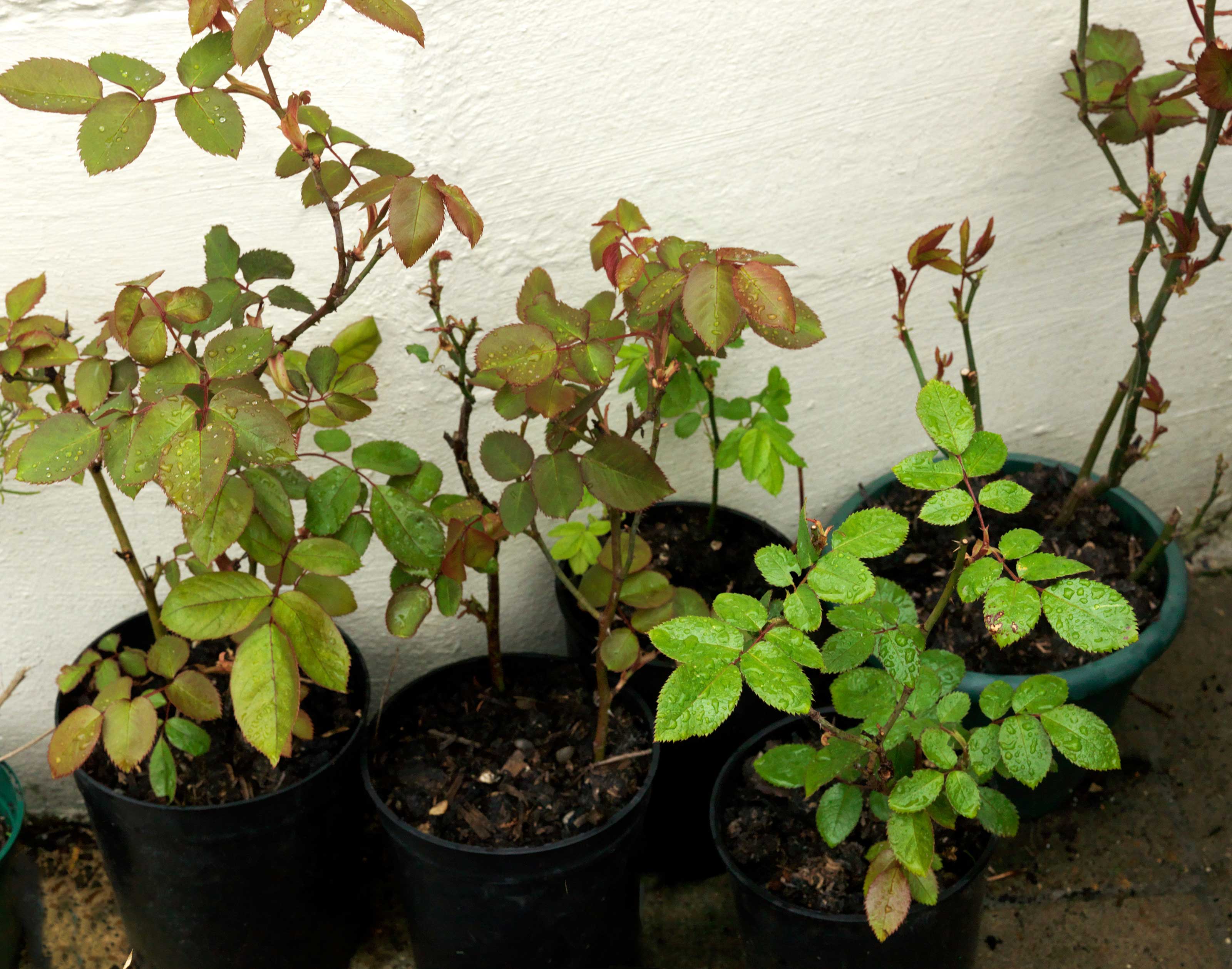
These roses have grown successfully from cuttings
You can take hardwood cuttings from most deciduous shrubs. These include deutzia, buddleja, cornus, ribes and roses (and once you've got them off to a good start, our guide on how to grow roses is full of useful tips).
Climbers such as vines and honeysuckle are also good contenders. You can also take hardwood cuttings from fruit shrubs, including gooseberries and black, red and white currants – ideal if you're interested in growing fruit in pots for your patio ideas. Figs can also be propagated from hardwood cuttings.
If you want to learn how to take cuttings from plants for propagating trees, salix (willow) can also be done in this way.
How long do cuttings take to root?
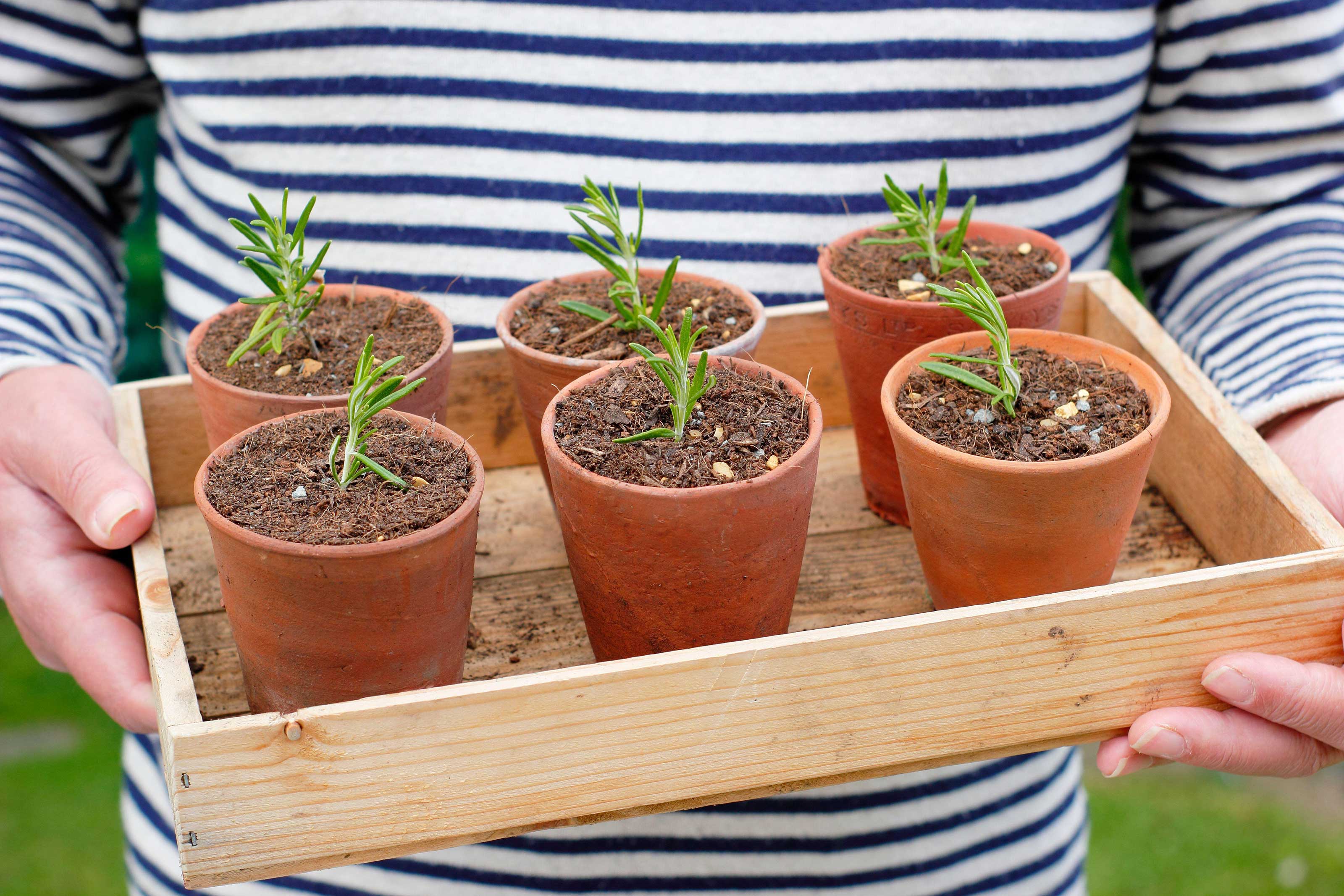
Softwood and semi-ripe cuttings are quicker to propagate
Different types of cuttings take different amounts of time to propagate.
Softwood cuttings are the speediest, taking only a matter of weeks on a sunny windowsill, providing the conditions are right. Semi-ripe cuttings can take from four to eight weeks to get going.
According to the experts at Gardeners' World, hardwood cuttings can take many months to propagate, so should be left for around a year until they are transplanted.
How do you take basal cuttings from plants?
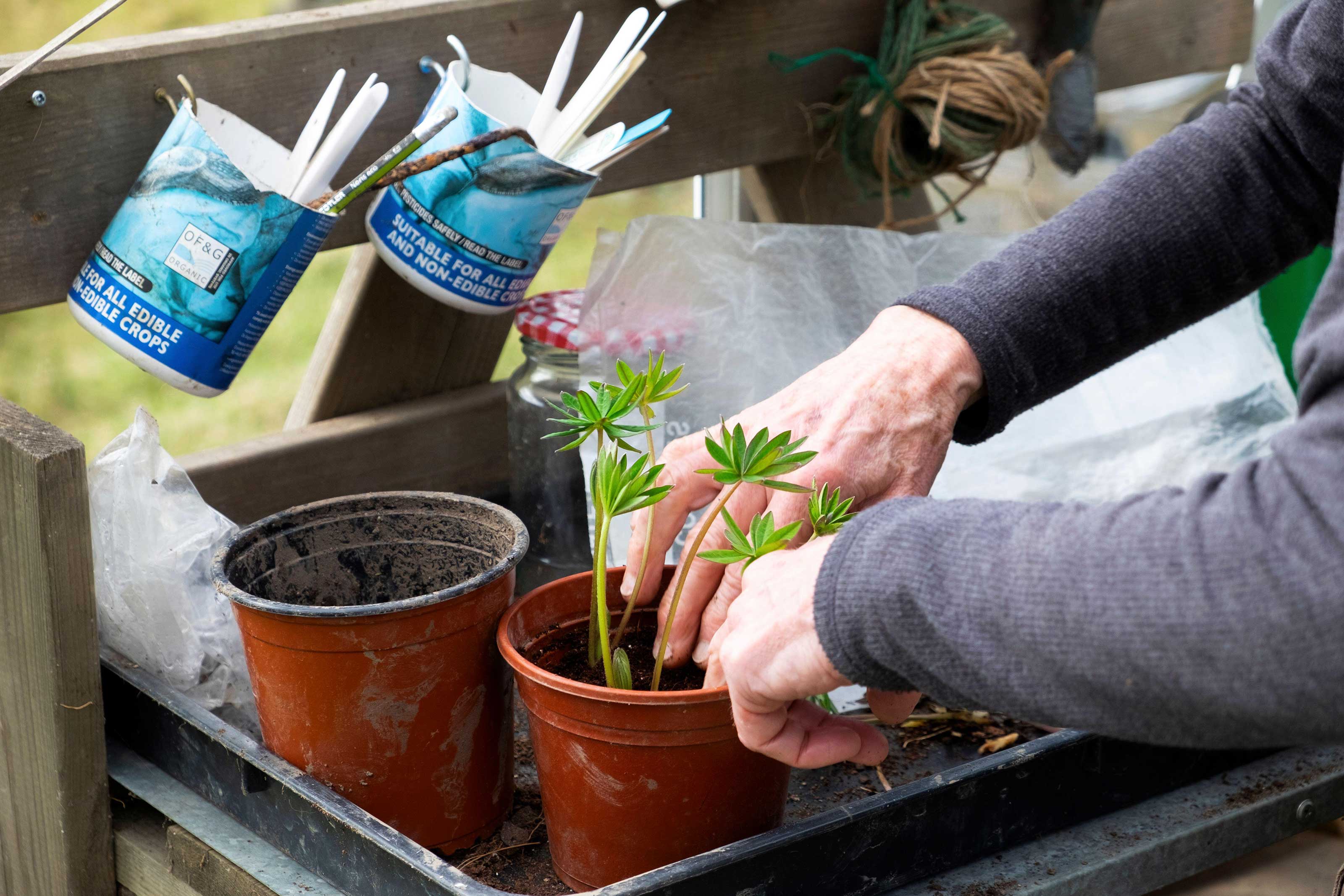
Lupins are a favorite cottage garden plant that can be grown from basal cuttings
There are a few varieties that need slightly different treatment when learning how to take cuttings from plants. These include some of the best cottage garden plants of delphiniums and lupins, as well as asters and chrysanthemums, for example.
For these, you need to take basal cuttings. As the RHS explains, these are similar to normal, nodal cuttings, however they are taken from the clusters of young shoots, from the base of the plants, in spring.
- Select sturdy shoots 7–10cm high, with the leaves just starting to unfold.
- Use a sharp knife to remove them from as close to the base as possible. Take some of the woody basal tissue, too.
- Proceed as for softwood cuttings, as detailed above.
What are some common problems with learning how to take cuttings from plants?
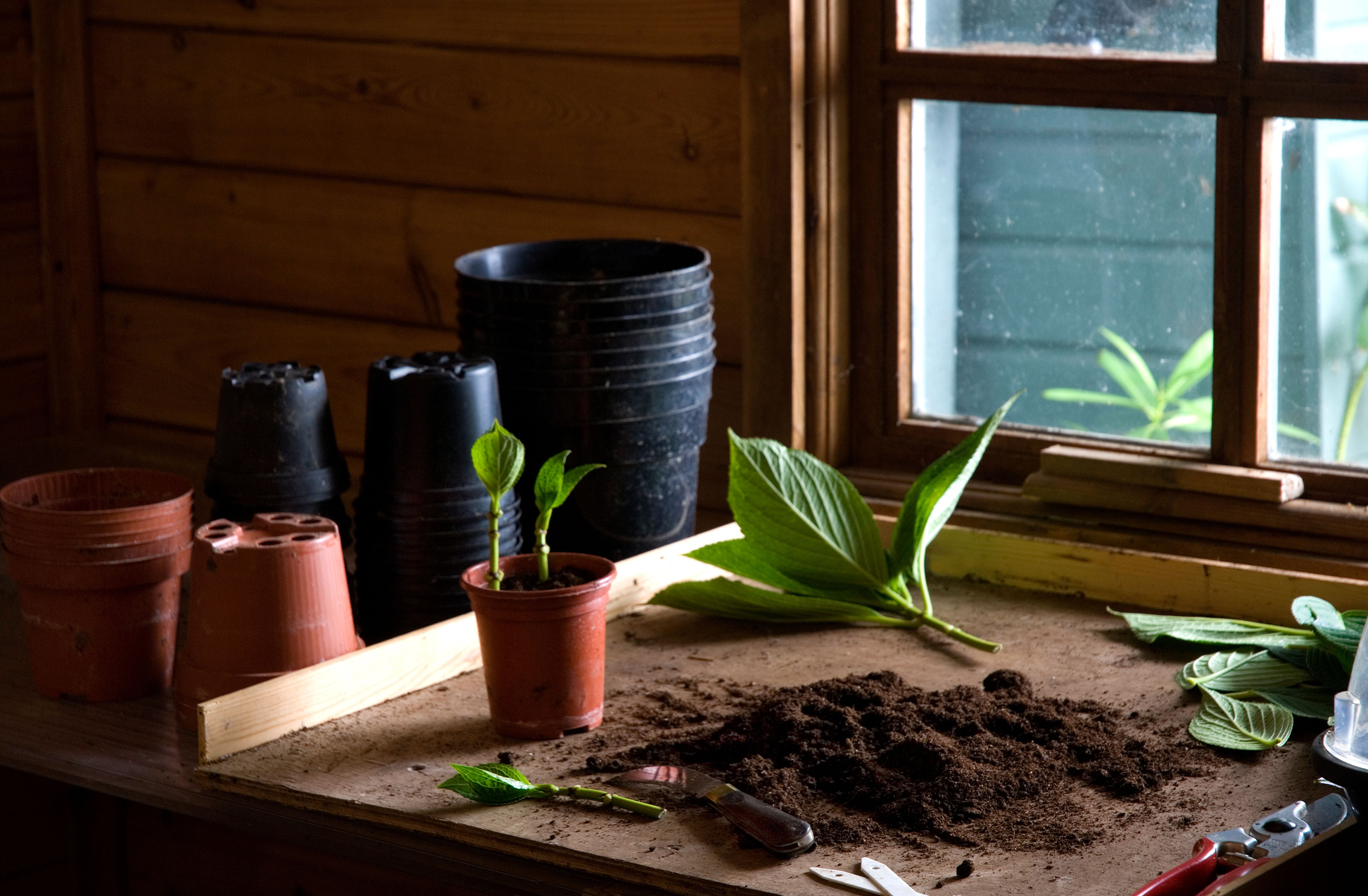
Knowing how to take cuttings from plants will reward you with lots of freebies
'Cuttings are delicate and vulnerable to a range of problems, especially in their early stages,' says Amateur Gardening expert, Ruth Hayes.
Ruth explains how rot and mould are the main dangers. To avoid this from happening, try to make sure your cuttings aren't touching the bag or lid that they are sealed in.
It's also important to grow them somewhere warm and light for the best results. However, be careful not to let them dry out, including once your cuttings have rooted and the coverings have been removed.
In terms of garden pests, watch out for aphids attacking the tender young growing tips, Ruth adds. You can carefully wipe any off between your fingers and thumb, or take a look at our guide on how to get rid of aphids for more advice.

Sarah is a freelance journalist and is lucky to be able to write about her two main passions: gardening and food. She recently took on an allotment too, and is really loving growing all her own fruit and veg then bringing it home to try out in new recipes for her food and gardening blog, A Cook's Plot.
